
Freight rail services provider CSX (NASDAQ: CSX) met Wall Street’s revenue expectations in Q3 CY2025, but sales were flat year on year at $3.59 billion. Its non-GAAP profit of $0.44 per share was 3.8% above analysts’ consensus estimates.
Is now the time to buy CSX? Find out by accessing our full research report, it’s free for active Edge members.
CSX (CSX) Q3 CY2025 Highlights:
- Revenue: $3.59 billion vs analyst estimates of $3.57 billion (flat year on year, in line)
- Adjusted EPS: $0.44 vs analyst estimates of $0.42 (3.8% beat)
- Operating Margin: 30.3%, down from 37.4% in the same quarter last year due to non-cash goodwill impairment of $164 million
- Free Cash Flow Margin: 16.9%, down from 29.5% in the same quarter last year
- Sales Volumes rose 1.4% year on year (2.6% in the same quarter last year)
- Market Capitalization: $67.56 billion
Company Overview
Established as part of the Chessie System and Seaboard Coast Line Industries merger, CSX (NASDAQ: CSX) is a transportation company specializing in freight rail services.
Revenue Growth
A company’s long-term sales performance can indicate its overall quality. Even a bad business can shine for one or two quarters, but a top-tier one grows for years. Over the last five years, CSX grew its sales at a tepid 5.8% compounded annual growth rate. This fell short of our benchmark for the industrials sector and is a rough starting point for our analysis.
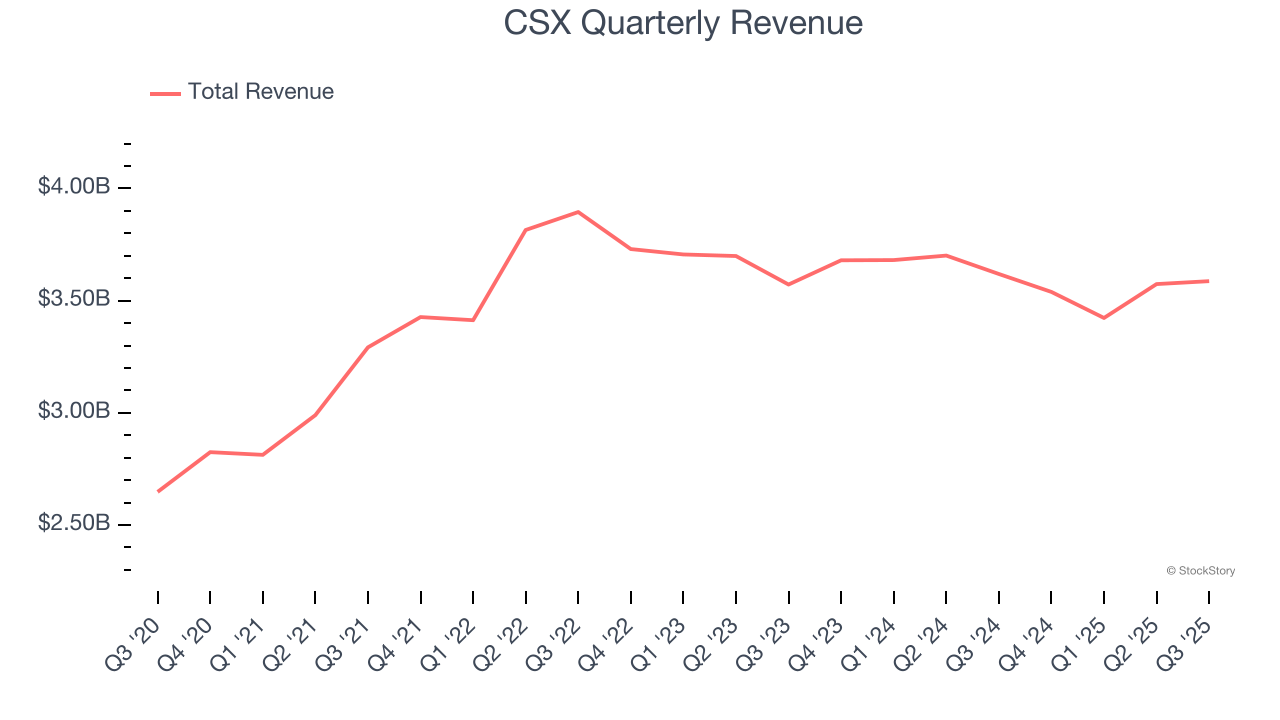
We at StockStory place the most emphasis on long-term growth, but within industrials, a half-decade historical view may miss cycles, industry trends, or a company capitalizing on catalysts such as a new contract win or a successful product line. CSX’s performance shows it grew in the past but relinquished its gains over the last two years, as its revenue fell by 2% annually. CSX isn’t alone in its struggles as the Rail Transportation industry experienced a cyclical downturn, with many similar businesses observing lower sales at this time. 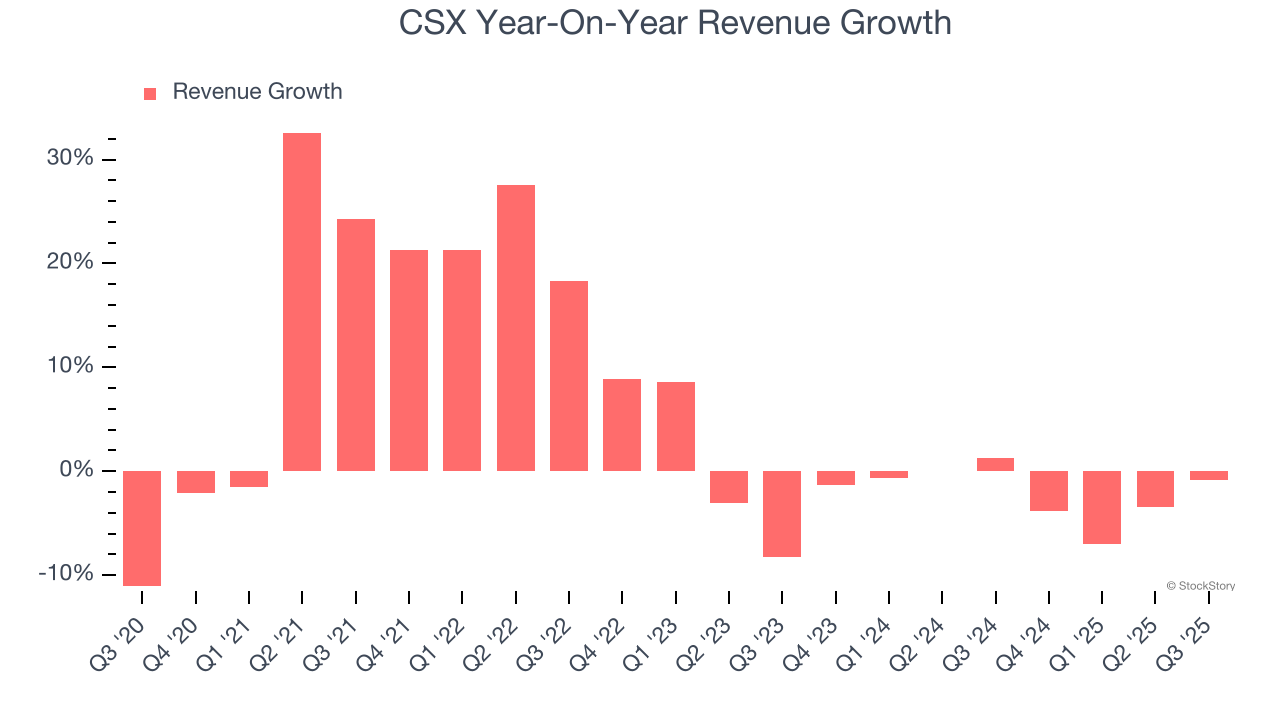
We can dig further into the company’s revenue dynamics by analyzing its number of units sold, which reached 1.61 million in the latest quarter. Over the last two years, CSX’s units sold averaged 1.3% year-on-year growth. Because this number is better than its revenue growth, we can see the company’s average selling price decreased. 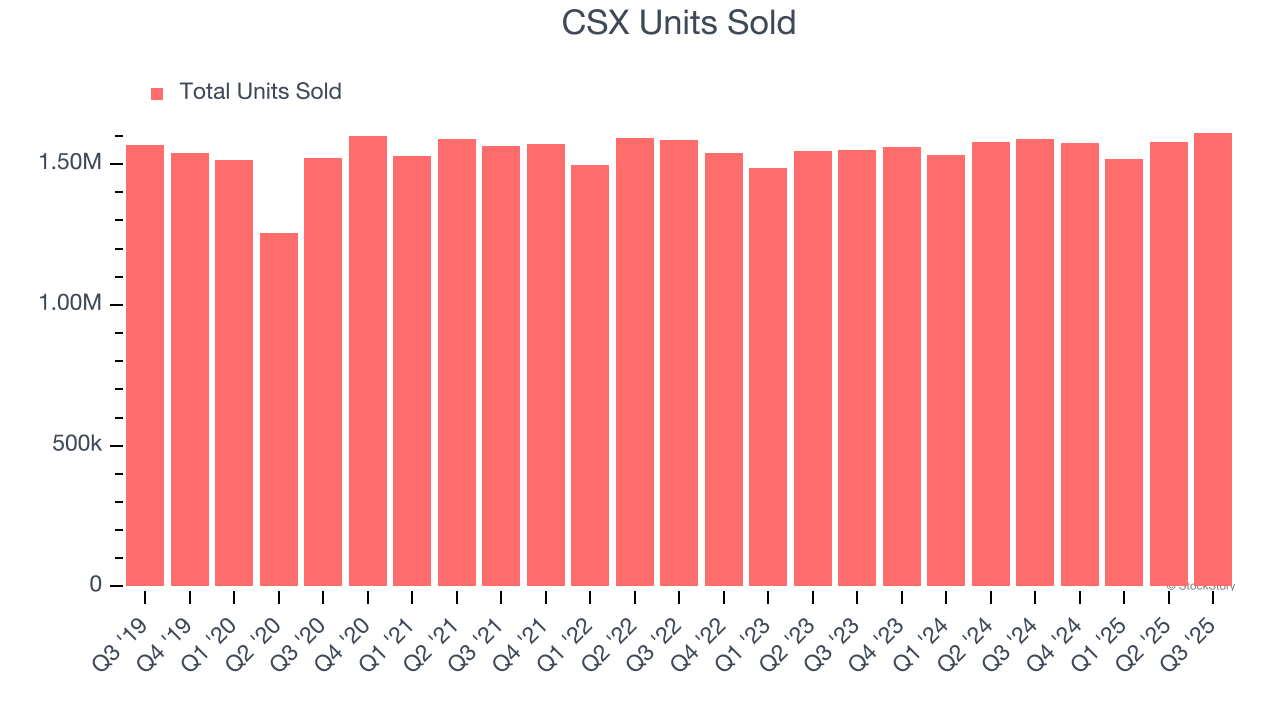
This quarter, CSX’s $3.59 billion of revenue was flat year on year and in line with Wall Street’s estimates.
Looking ahead, sell-side analysts expect revenue to grow 3.6% over the next 12 months. While this projection implies its newer products and services will fuel better top-line performance, it is still below average for the sector.
Today’s young investors won’t have read the timeless lessons in Gorilla Game: Picking Winners In High Technology because it was written more than 20 years ago when Microsoft and Apple were first establishing their supremacy. But if we apply the same principles, then enterprise software stocks leveraging their own generative AI capabilities may well be the Gorillas of the future. So, in that spirit, we are excited to present our Special Free Report on a profitable, fast-growing enterprise software stock that is already riding the automation wave and looking to catch the generative AI next.
Operating Margin
Operating margin is one of the best measures of profitability because it tells us how much money a company takes home after procuring and manufacturing its products, marketing and selling those products, and most importantly, keeping them relevant through research and development.
CSX has been a well-oiled machine over the last five years. It demonstrated elite profitability for an industrials business, boasting an average operating margin of 38.6%. This result isn’t surprising as its high gross margin gives it a favorable starting point.
Looking at the trend in its profitability, CSX’s operating margin decreased by 13.7 percentage points over the last five years. Many Rail Transportation companies also saw their margins fall (along with revenue, as mentioned above) because the cycle turned in the wrong direction. We hope CSX can emerge from this a stronger company, as the silver lining of a downturn is that market share can be won and efficiencies found.
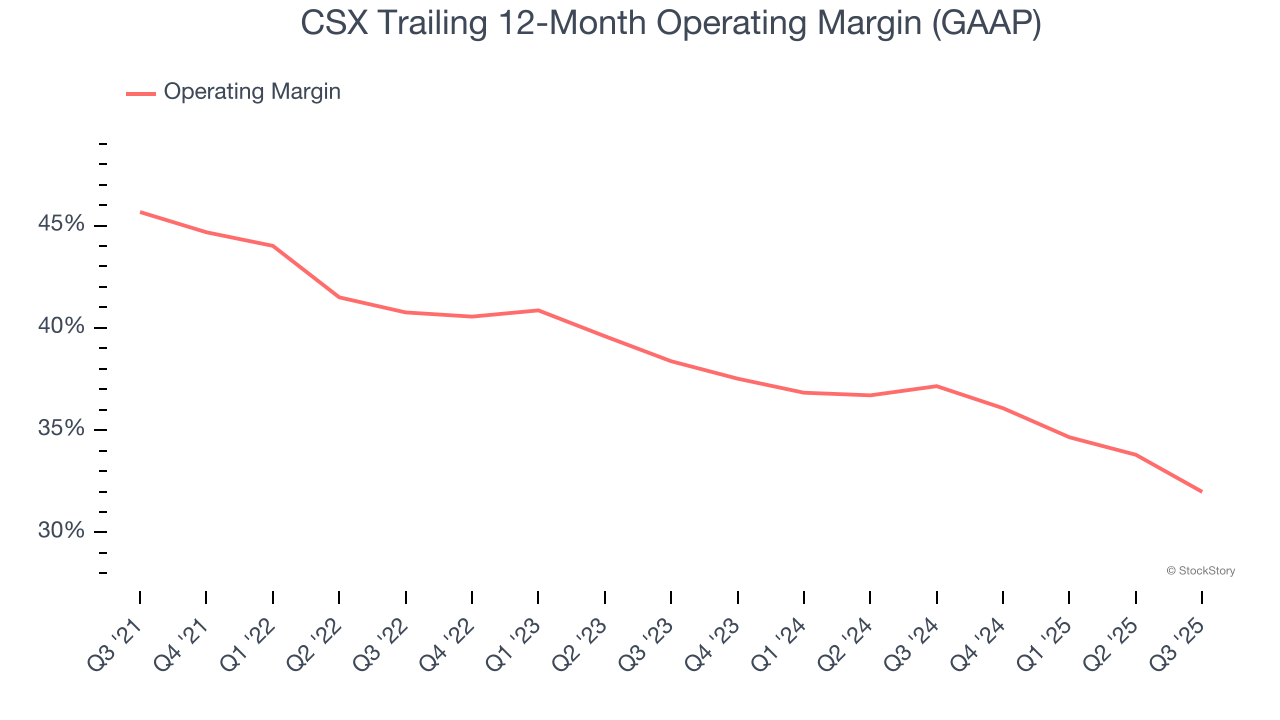
This quarter, CSX generated an operating margin profit margin of 30.3%, down 7.1 percentage points year on year. Since CSX’s operating margin decreased more than its gross margin, we can assume it was less efficient because expenses such as marketing, R&D, and administrative overhead increased.
Earnings Per Share
We track the long-term change in earnings per share (EPS) for the same reason as long-term revenue growth. Compared to revenue, however, EPS highlights whether a company’s growth is profitable.
CSX’s unimpressive 6.4% annual EPS growth over the last five years aligns with its revenue performance. This tells us it maintained its per-share profitability as it expanded.
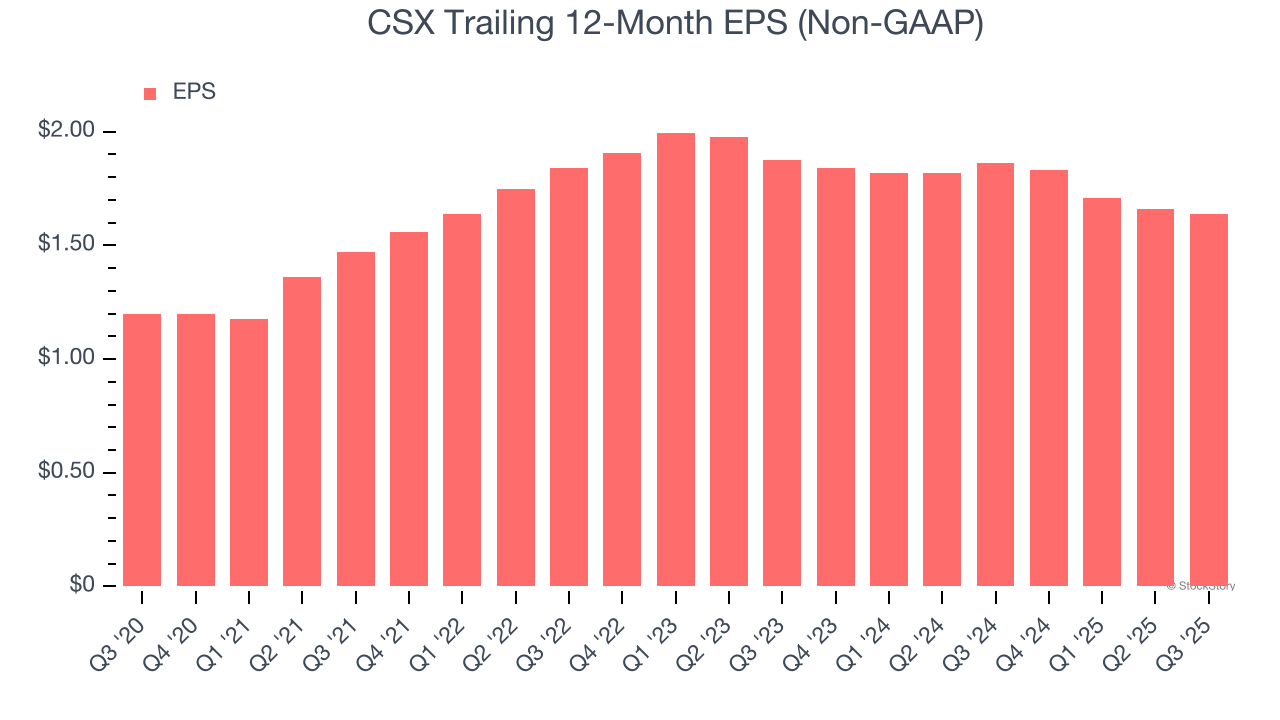
Like with revenue, we analyze EPS over a shorter period to see if we are missing a change in the business.
CSX’s two-year annual EPS declines of 6.5% were bad and lower than its two-year revenue losses.
We can take a deeper look into CSX’s earnings to better understand the drivers of its performance. CSX’s operating margin has declined over the last two years. This was the most relevant factor (aside from the revenue impact) behind its lower earnings; interest expenses and taxes can also affect EPS but don’t tell us as much about a company’s fundamentals.
In Q3, CSX reported adjusted EPS of $0.44, down from $0.46 in the same quarter last year. Despite falling year on year, this print beat analysts’ estimates by 3.8%. Over the next 12 months, Wall Street expects CSX’s full-year EPS of $1.64 to grow 12%.
Key Takeaways from CSX’s Q3 Results
While revenue was in line, it was good to see CSX beat analysts’ EPS expectations this quarter. Overall, this was a decent quarter once we look through the non-cash goodwill impairment of $164 million that distorted GAAP results. The stock traded up 2.8% to $36.96 immediately following the results.
So do we think CSX is an attractive buy at the current price? We think that the latest quarter is only one piece of the longer-term business quality puzzle. Quality, when combined with valuation, can help determine if the stock is a buy. We cover that in our actionable full research report which you can read here, it’s free for active Edge members.






